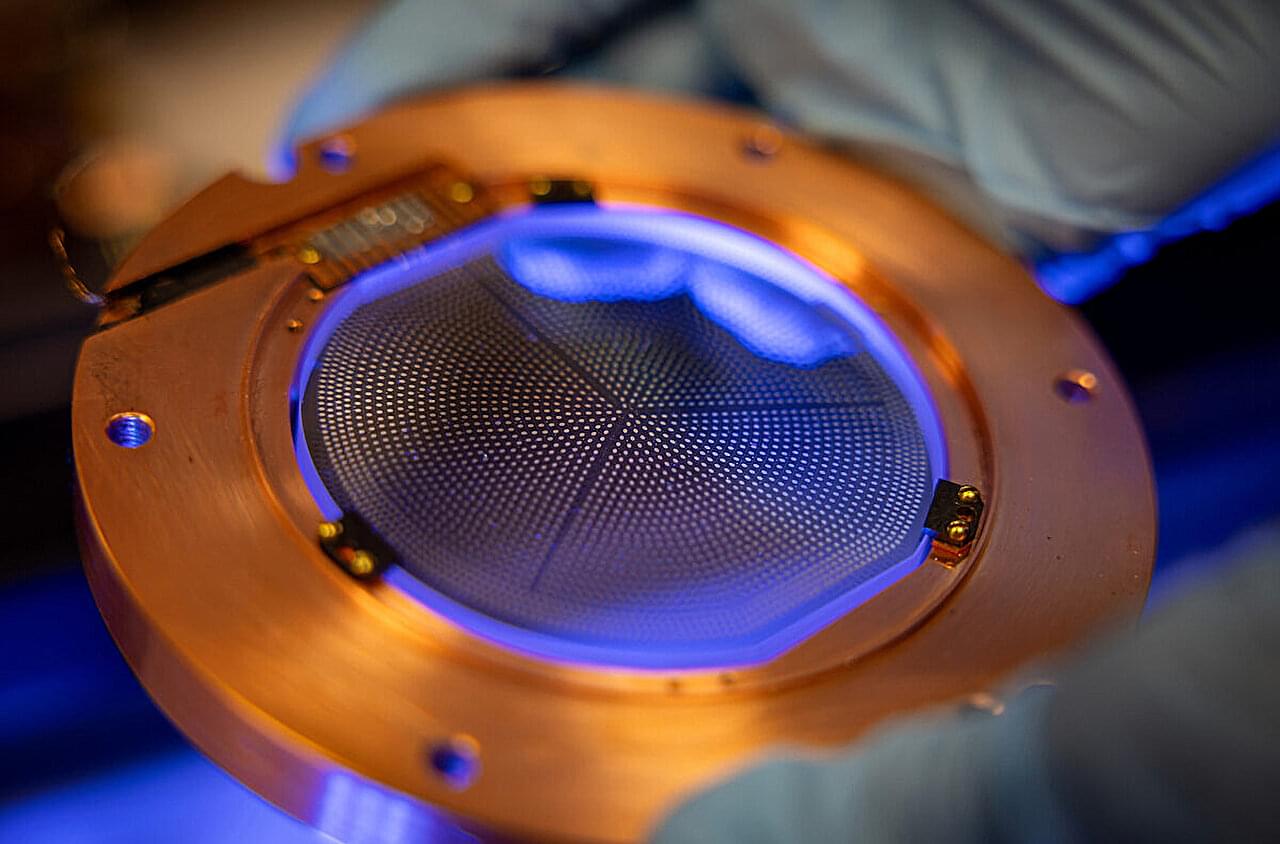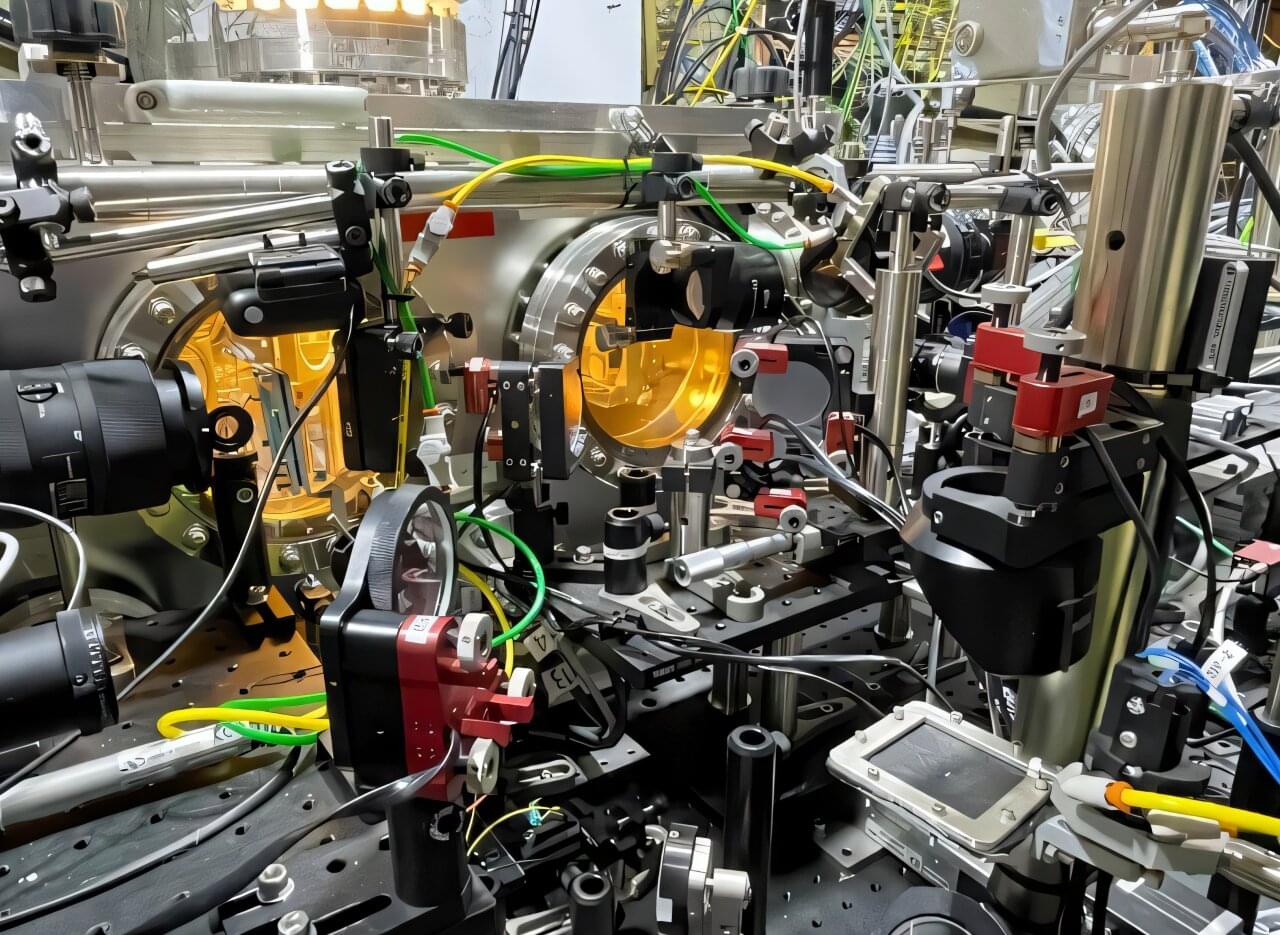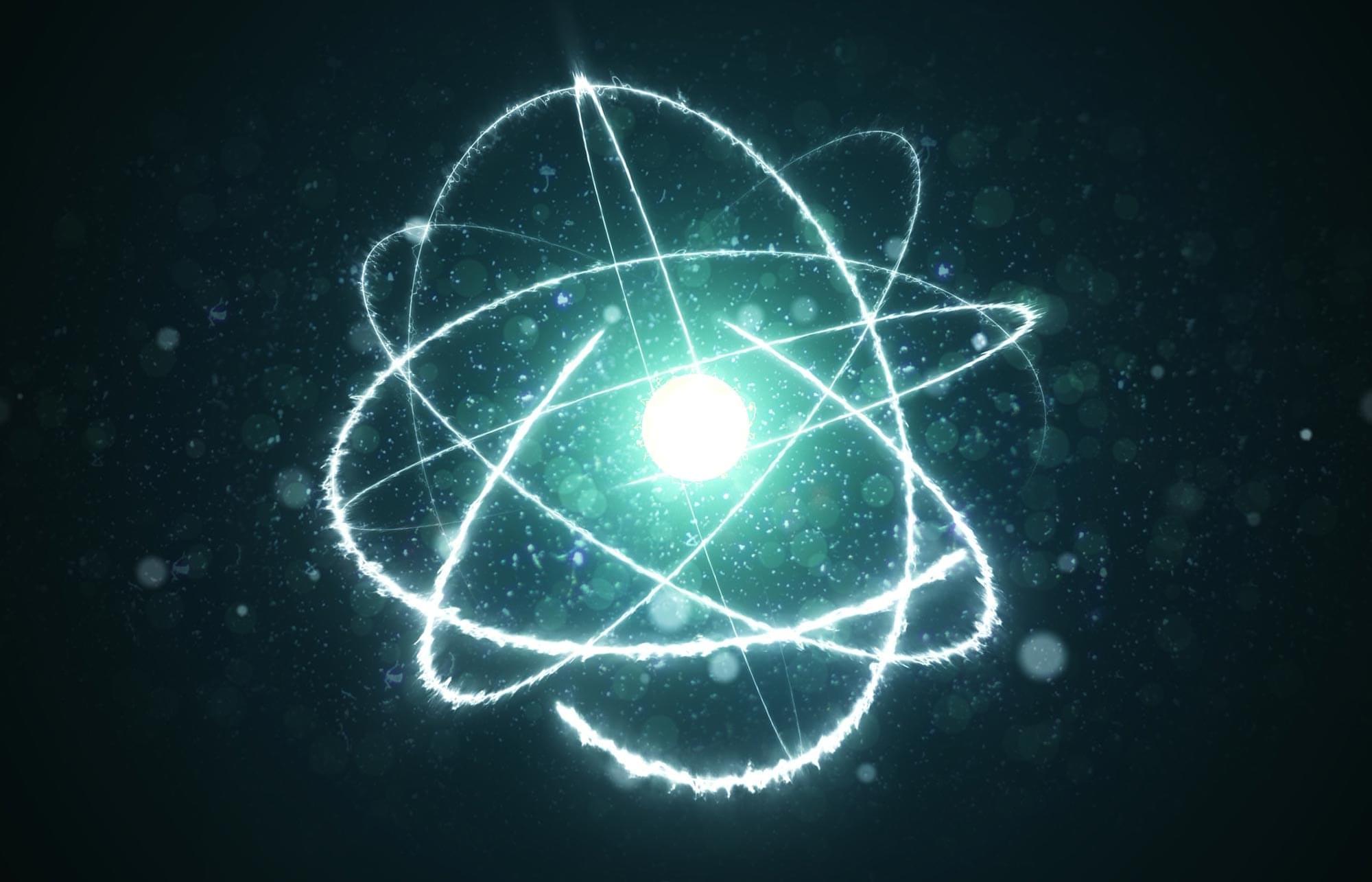At a newly identified wavelength, trapping light avoids disturbing a specific excited atomic state.



When it comes to understanding the universe, what we know is only a sliver of the whole picture.
Dark matter and dark energy make up about 95% of the universe, leaving only 5% “ordinary matter,” or what we can see. Dr. Rupak Mahapatra, an experimental particle physicist at Texas A&M University, designs highly advanced semiconductor detectors with cryogenic quantum sensors, powering experiments worldwide and pushing the boundaries to explore this most profound mystery.
Mahapatra likens our understanding of the universe—or lack thereof—to an old parable: “It’s like trying to describe an elephant by only touching its tail. We sense something massive and complex, but we’re only grasping a tiny part of it.”

One of the great successes of 20th-century physics was the quantum mechanical description of solids. This allowed scientists to understand for the first time how and why certain materials conduct electric current and how these properties could be purposefully modified. For instance, semiconductors such as silicon could be used to produce transistors, which revolutionized electronics and made modern computers possible.
To be able to mathematically capture the complex interplay between electrons and atomic nuclei and their motions in a solid, physicists had to make some simplifications. They assumed, for example, that the light electrons in an atom follow the motion of the much heavier atomic nuclei in a crystal lattice without any delay. For several decades, this Born-Oppenheimer approximation worked well.

Researchers from the Department of Energy’s SLAC National Accelerator Laboratory and the University of California, Los Angeles (UCLA), have designed innovative technology that can generate both high-energy and high-brightness electron bunches in an accelerator that is a fraction of the size of current particle accelerators.
This breakthrough has the potential to shrink the size of future particle colliders and X-ray free-electron lasers that researchers use to gain insight into nature’s fundamental building blocks and processes.
In the new study, the UCLA-led team developed a novel plasma wakefield accelerator (PWFA), in which electrons gain energy by “surfing” a plasma wave rather than drawing energy from the electromagnetic field inside metal structures of conventional accelerators.
When observing small worms under a microscope, one might observe something very surprising: the worms appear to make a sweeping motion to clean their own environment. Physicists at the University of Amsterdam, Georgia Tech and Sorbonne Université/CNRS have now discovered the reason for this unexpected behavior.
When centimeter-long aquatic worms, such as T. tubifex or Lumbriculus variegatus, are placed in a Petri dish filled with sub-millimeter-sized sand particles, something surprising happens. Over time, the worms begin to spontaneously clean up their surroundings. They sweep particles into compact clusters, gradually reshaping and organizing their environment.
In a study that was published in Physical Review X this week, a team of researchers show that this remarkable sweeping behavior does not require a brain, or any kind of complex interaction between the worms and the particles. Instead, it emerges from the natural undulating motion and flexibility that the worms possess.
“milliards” means “billions” btw.
Here is Emergent Garden’s thoughts on emergent complexity. I go through a tour of simple systems that produce unexpected complexity, and try to break down emergence into more general and useful ideas. We talk about snowflakes and ant colonies, cellular automata and universe simulations, and the many weird ideas of Stephen Wolfram. I also offer some advice for creating and encouraging emergent behavior. This video is important to me. Emergence is the most interesting thing in the universe.
~SUPPORT ME~
Scrimba: https://scrimba.com/?via=EmergentGarden.
Patreon: https://www.patreon.com/emergentgarden.
Ko-fi: https://ko-fi.com/emergentgarden.
Twitter: https://twitter.com/max_romana.
Bluesky: https://bsky.app/profile/emergentgarden.bsky.social.
~SOURCES~
Particle Life: https://sandbox-science.com/particle-life.
Universe Sandbox: https://universesandbox.com/
Lego Galaxy: https://www.youtube.com/watch?v=djLyoDmSPF0
Big Bang: https://svs.gsfc.nasa.gov/12656/
Emergence Animation: https://www.pexels.com/video/an-artist-s-illustration-of-art…-25744130/
Ants Solving Maze: https://www.reddit.com/r/Damnthatsinteresting/comments/1hlyv…_maneuver/
Neuron Footage: https://www.youtube.com/watch?v=2TIK9oXc5Wo.
Snowflake Footage: https://www.youtube.com/watch?v=q-PQk2-Po-g.
The Life Engine: https://thelifeengine.net.
Water Molecule Sim: https://twitter.com/EdgarGonzalezGT/status/1877078173910753452
Langton’s Ant Simulator: https://evolvecode.io/turmites/index.html.
Conway’s Game of Life: https://playgameoflife.com/
Recursive Game of Life: https://oimo.io/works/life/
A New Kind of Science: https://www.wolframscience.com/nks/
Stephen Wolfram Podcasts: https://www.youtube.com/watch?v=PdE-waSx-d8&list=PLdwvZsAHiS…9ChTYxtZsD
Complexity, A Guided Tour: https://www.amazon.com/Complexity-Guided-Tour-Melanie-Mitche…atfound-20
Wolfram Hypergraph Simulator: https://met4citizen.github.io/Hypergraph/
Atom Orbital Simulation: https://www.falstad.com/qmatom/
Lego Bonsai Alternate Build: https://www.youtube.com/watch?v=YnuCOrCJojw.
Lego Blocks Made of Legos:
Tornado: https://www.youtube.com/watch?v=LGcGFU_Hi9U
Carl Sagan’s Cosmos: https://archive.org/details/cosmos_1980/COSMOS_01.mp4.
Terry Davis Quote: https://www.youtube.com/watch?v=k0qmkQGqpM8
My Music Guy: https://youtube.com/@acolyte-compositions?si=2P97LlROhNgQYOa
“Deliberate Thought“
Kevin MacLeod (incompetech.com)
Licensed under Creative Commons: By Attribution 3.0
http://creativecommons.org/licenses/by/3.0/
~TIMESTAMPS~

The ability of single active filaments to cluster smaller particles could inspire new materials for building soft robots that perform biological functions.
Every teenager knows that their room will not tidy up by itself. Without intervention, it will inevitably become messier, and they will need to do some work to turn disorder into order. When faced with a similar problem—particle collection—scientists have tried to get individual bacteria, robots, or other self-propelling units to put in the work [1, 2]. But unlike a teenager, a single such unit is usually insufficient to get the job done. Now Rosa Sinaasappel of the University of Amsterdam and her collaborators have proposed and tested a strategy that enables a single active filament to act as a sweeping agent [3]. Thanks to the versatility of polymer architectures, the investigation opens up a huge molecular-design space.
One of life’s most defining properties is its constant struggle against the second law of thermodynamics. At different scales, living organisms need to maintain complex structures or perform directed and persistent motion, feats that would be extraordinarily improbable in thermal equilibrium [4]. Organisms are able to sustain order against entropy by means of constant energy consumption, a feature called “activity.” Conceptually, the sweeping of small objects into piles is a similar problem. The goal is to reach a low-entropy state that is highly disfavored at equilibrium. Bacteria and other active particles, driven by their persistent motion, spontaneously aggregate, and they have been shown to induce clustering of passive particles [1, 2]. However, successful clustering typically requires using a large number of active particles or engineering a complex setting with a favorable geometry [5, 6].

An antiferromagnet with a zigzag magnetic structure exhibits a diode effect that has potential applications in spintronics.
In a traditional diode, current flows in one direction only, thanks to an internal charge imbalance. Researchers have now shown a diode-like effect in an antiferromagnet with a zigzag magnetic structure [1]. The underlying mechanism is different from that in traditional diodes, as the zigzag pattern creates a combined magnetic and electric field that favors current flow in one direction. The strength of the diode effect in the antiferromagnet is relatively small, but rather than exploiting the effect to make a diode for conventional circuits, the team foresees possible applications in spintronics, devices that make use of electron spins.
A typical diode is a junction between two semiconductors having different charge carriers. The charge imbalance across this junction restricts current to flow in only one direction. Diode-like behavior can, in principle, occur in a single material, but it requires that the material’s internal structure is asymmetric in a particular way. This asymmetry should produce two effects: an internal electric field and an internal magnetic field. When those two fields are perpendicular to each other, they can exert a one-way force—called a toroidal moment—on electrons moving through the material, explains Kenta Sudo from Tohoku University in Japan.

Quantum theory and Einstein’s theory of general relativity are two of the greatest successes in modern physics. Each works extremely well in its own domain: Quantum theory explains how atoms and particles behave, while general relativity describes gravity and the structure of spacetime. However, despite many decades of effort, scientists still do not have a satisfying theory that combines both into one clear picture of reality.
Most common approaches assume that gravity must also be described using quantum ideas. As physicist Richard Feynman once said, “We’re in trouble if we believe in quantum mechanics but don’t quantize gravity.” Yet quantum theory itself has deep unresolved problems. It does not clearly explain how measurements lead to definite outcomes, and it relies on strange ideas that clash with everyday experience, such as objects seemingly behaving like both waves and particles, and apparent nonlocal connections between distant systems.
These puzzles become even sharper because of Bell’s theorem. This theorem shows that no theory based on ordinary ideas—such as locality, an objective reality, and freely chosen measurements—can fully match the predictions of quantum theory within our usual four-dimensional view of space and time. These quantum predictions have been repeatedly confirmed in tests of entanglement, first discussed by Einstein, Podolsky, and Rosen (EPR). As a result, simple classical explanations limited to ordinary four-dimensional spacetime cannot fully account for what we observe.
